Rolex Sumariner 1680: a "date" with the future
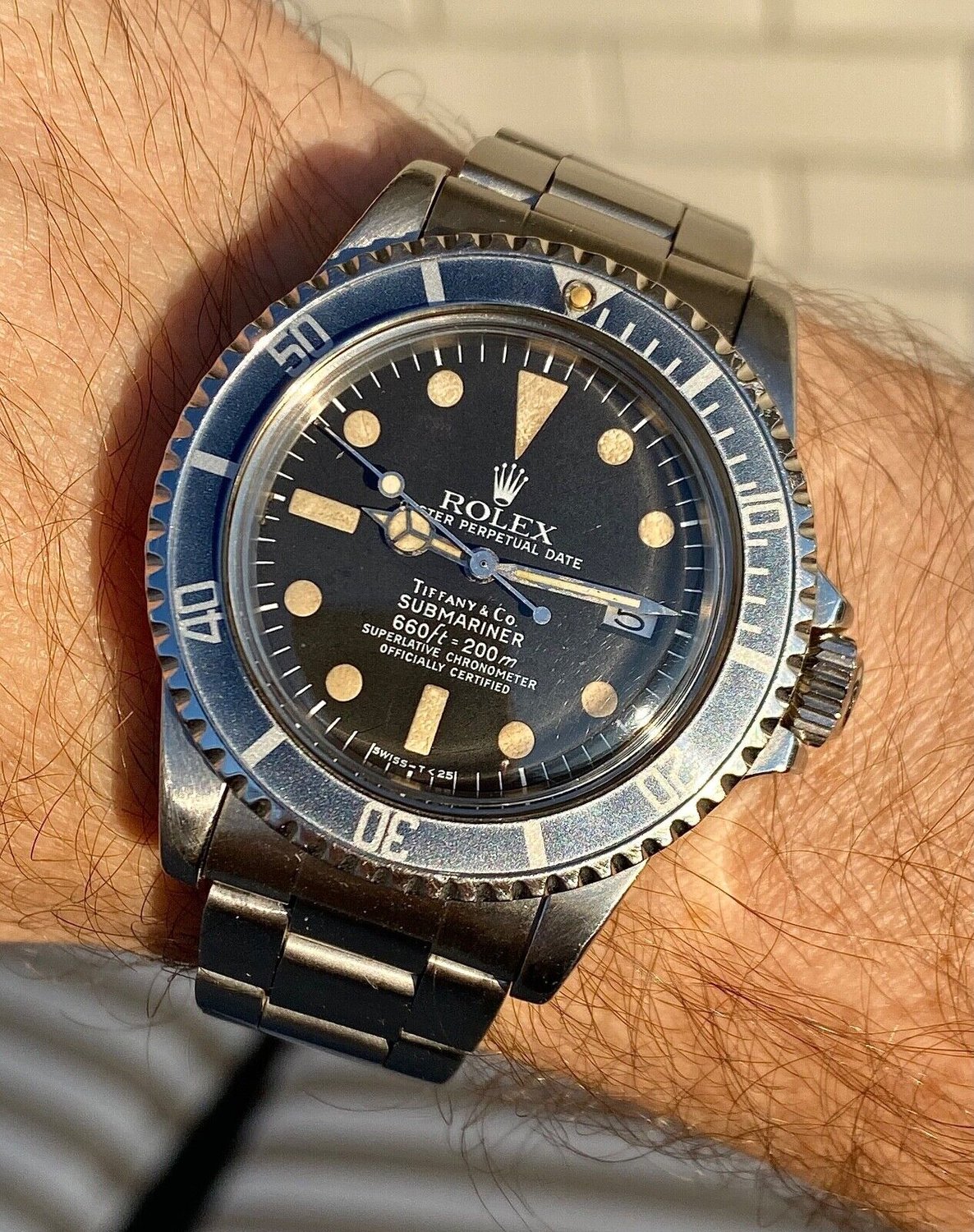
Published: Sep 15, 2023
The Date Function
Perhaps the most controversial moment in the history of the world’s favorite dive watch – the Rolex Submariner – came in the late 1960s when the ref. 1680 emerged; the first reference to sport a date function. For many of the more traditional fans, the ones invested in the brand’s legacy of tough but stylish tool watches, it marked the point at which the Submariner began to stray from its true roots and enter the realm of being a status symbol.

Rolex's Response
Rolex also seemed to agree. The Rolex 1680, as well as debuting the calendar complication, was also the first model to introduce precious metals to the collection with a solid 18k yellow gold edition. However, contentious or not, it is a fascinating entry into the Submariner chronicles – the one which split the series in two, giving us both date and no-date ranges. There was also a healthy amount of variation within the model during its run, with dial and bezel discrepancies serious aficionados love to pore over and study to the nth degree.
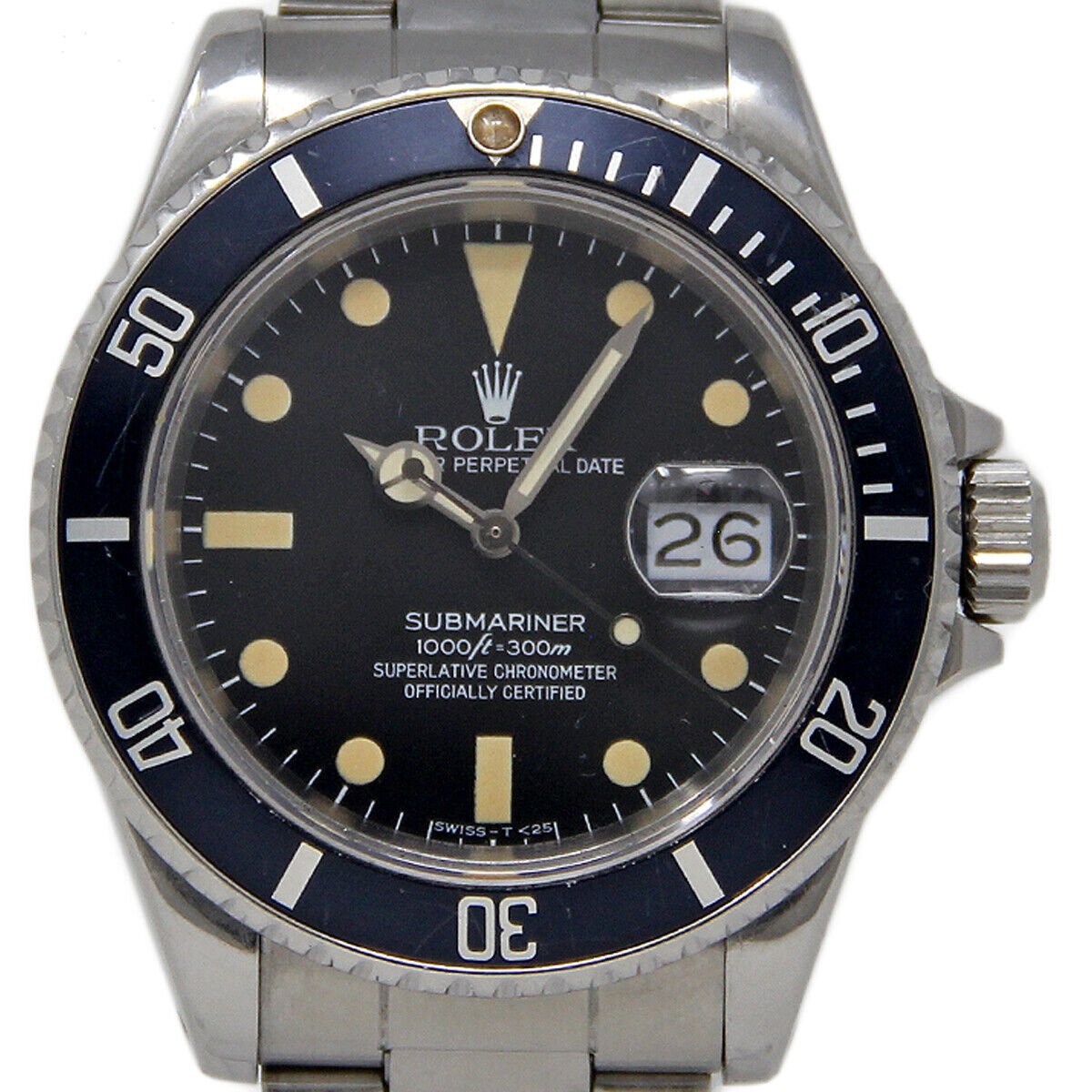
The Collectors' Delight
Today, late run examples of the ref. 1680 act as the ideal gateway into vintage Rolex ownership, while the rarest early specimens are incredibly sought-after and often mentioned in similar conversations that include Double Red Sea-Dweller and Bakelite bezel GMT-Master watches. Whatever stage you are at in your Rolex collecting journey, the Submariner ref. 1680 makes a tantalizing target, and so we have put together this comprehensive guide to keep you abreast of all the innumerable details you need to be aware of to make a great purchase.
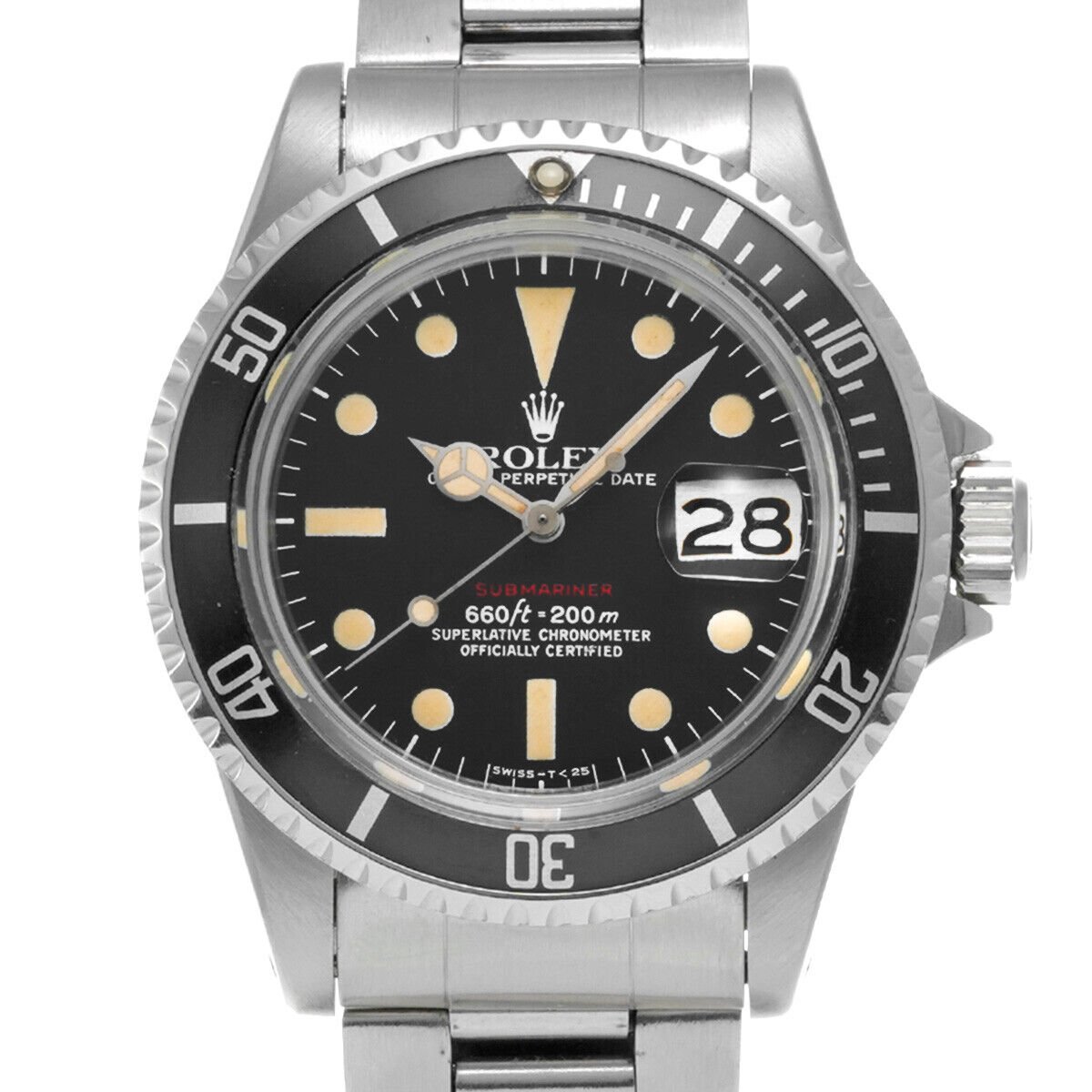
Rolex Submariner Reference 1680 History
Despite being such a momentous reference in the life of the most important sports watch of all time, there are some discrepancies regarding the official arrival of the reference 1680. The most probable year for the ref. 1680’s entrance is 1967, but there are several accounts of reference 1680 Submariner watches that have serial numbers that date back as early as 1966.
That puts the ref. 1680 in the same era as two no-date Subs which were running concurrently at the time; the ref. 5512 and ref. 5513. The only real difference between that pair lay in the movement driving them. The ref. 5512 was the (usually) COSC–rated variant, while its partner only ever received non-chronometer calibers. The ref. 5513 was therefore the cheaper option and the one with fewer lines of text on the dial. Rather than replacing those models, the ref. 1680 became the third Submariner reference available.
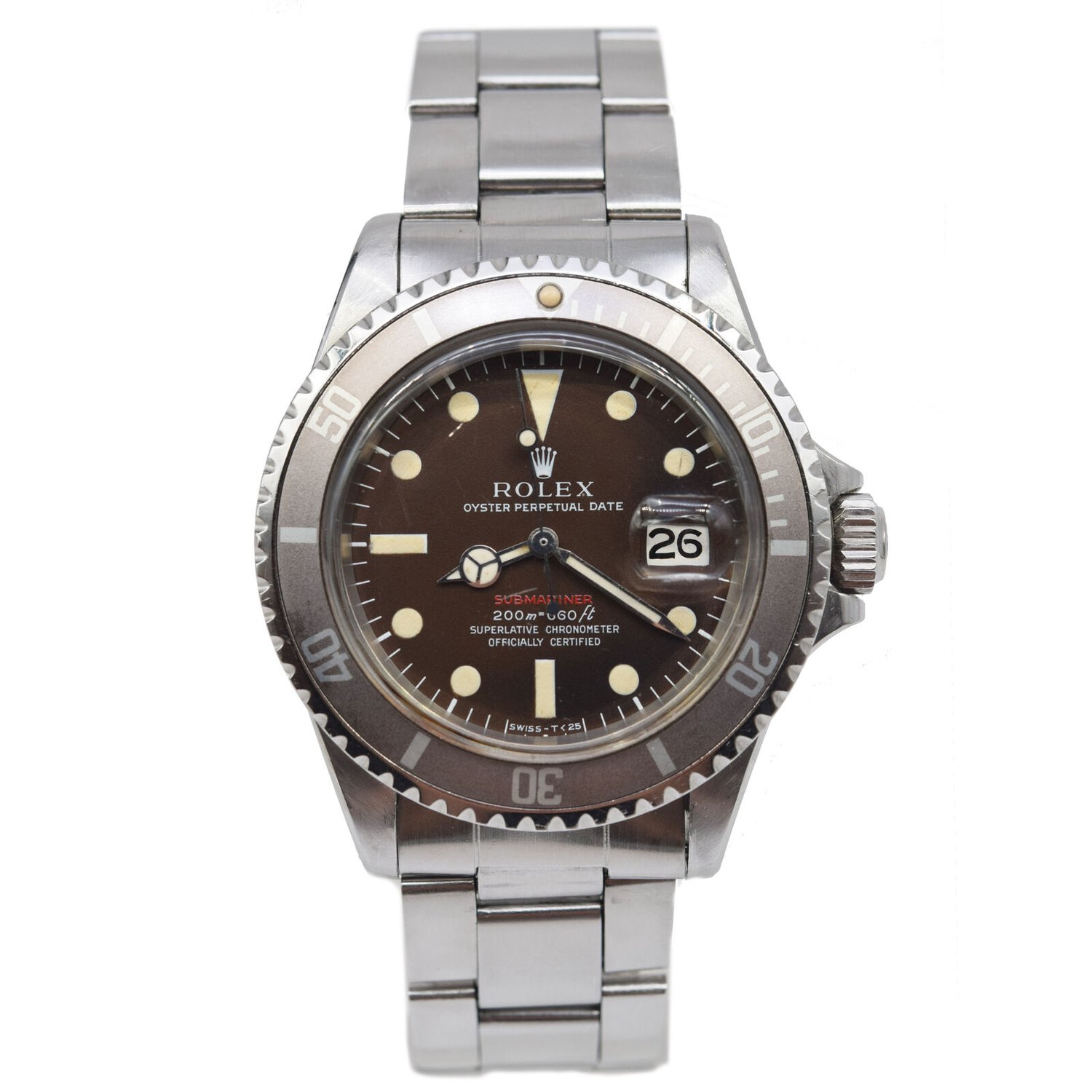
In terms of essential styling, there was nothing to choose between any of them. After a turbulent first few years in production, with Rolex releasing and quickly retiring numerous versions in an almost constant process of tweaking and revising, the Submariner had settled into its accepted form by 1959. That was the year the ref. 5512 came along, with its 40mm case, crown guards, and serrated bezel. This design blueprint was so successful, in fact, that the Sub’s basic shape stayed unaltered right up until 2010.
As for the ref. 1680, it’s production period lasted until 1979 (some say 1980). As well as the established steel model, with a black dial and bezel, Rolex also brought out an 18k yellow gold reference at the same time – the ref. 1680/8. Originally, it too had only all-black elements, but in 1971 another variant surfaced, this time with a dial and bezel insert in bright blue.
On both those precious metal models, the brand fitted what are referred to as ‘nipple dials’ by today’s collectors. Instead of the standardized mix of flat dots and baton hour markers printed directly on the surface like on the steel version, the gold models had applied gold indexes that were raised from the surface, with lume in the center.
However, as is usually the case with collectible vintage watches, there are always outliers and exceptions, and this is certainly one of them. If you find a gold ref. 1680 with a non-nipple dial, you can expect to pay a very hefty premium.

Evolution of the Rolex Submariner Reference 1680
One of the more engaging aspects of vintage Rolex collecting is the incredible amount of detail there is to get into. Submariner experts, in particular, could happily spend years, if not decades, cataloging the minute distinctions between the many different references that have appeared throughout the model’s history.
In the case of the ref. 1680, this has given rise to a whole host of nicknames and mini-collecting sub-genres. For instance, the very earliest pieces came fitted with what are now known as ‘meters first’ dials. These have the depth rating printed with the meters figure appearing above feet, and were only used on the very earliest versions. Later ‘feet first’ dials had the order reversed, and it wasn’t long before the reference 1680 became the standard bearer for this style.
Likewise, the variations in text on the dial alone are enough to make your head spin. There were so many changes, made so frequently, that Rolex enthusiasts have managed to compile an extensive list.
Key Rolex Submariner 1680 Dial Variations
- Red Submariner: These early examples, produced for only a short period in the late 1960s, have red text for the “Submariner” name.
- White Submariner: After the red, Rolex switched to white printing for the Submariner name, creating what collectors call the “White Submariner.”
- Mark I, II, III, IV, and Mark V Dials: These designations are given to various versions of the dial, reflecting slight changes in the fonts and text layout.
- Exclamation Point Dial: Some early 1680 dials had an exclamation point below 6 o’clock, which denoted the use of tritium as the luminescent material.
- Tropical Dials: These dials have aged to a brown color over time, often due to exposure to sunlight or moisture.
- Nipple Dials: Found on the 18k gold versions, these dials have raised gold indexes.
- Blue Submariner: The 18k gold version introduced in 1971 had a bright blue dial and bezel insert.
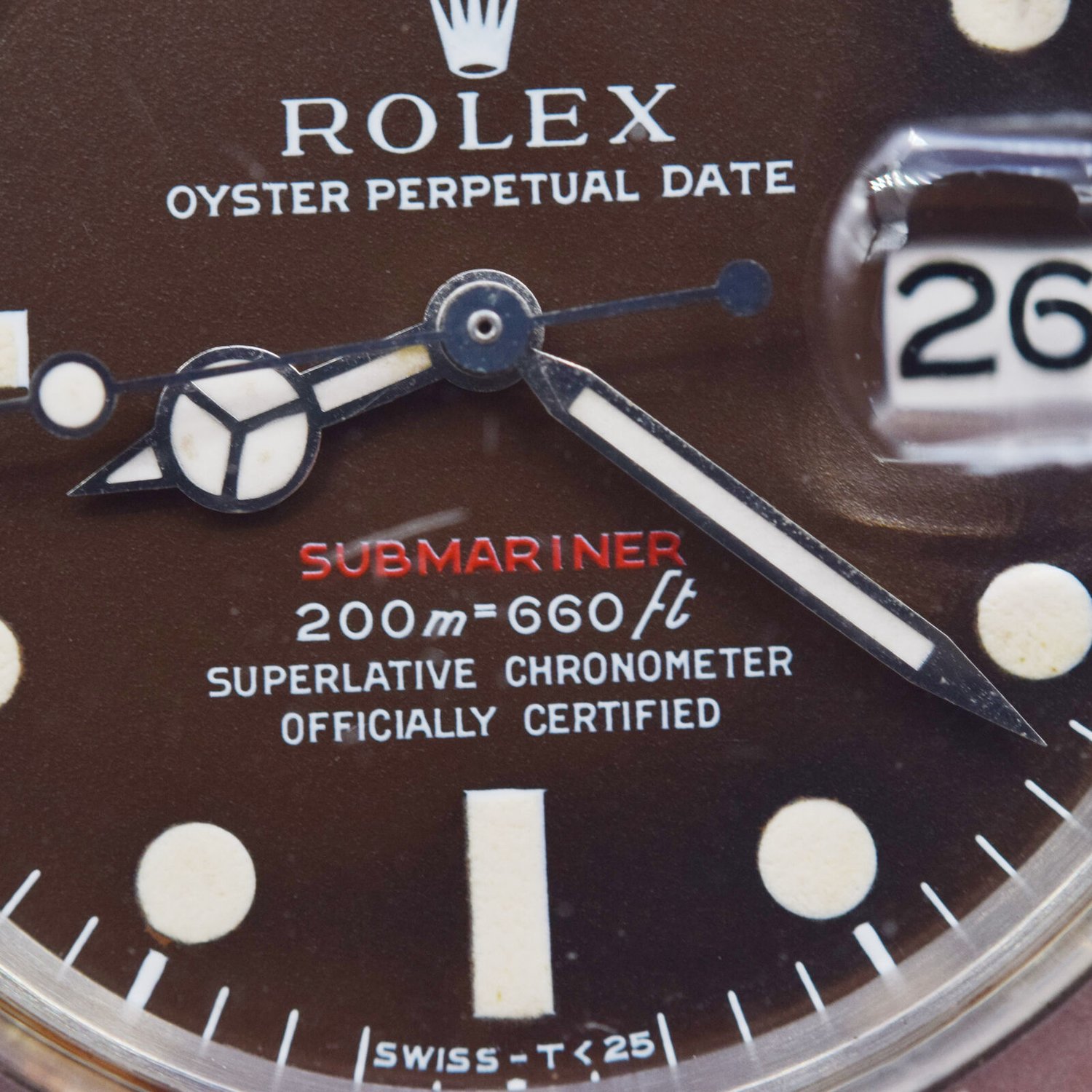

Hands and Bezel
The early Submariner ref. 1680 models typically had what are known as ‘pencil’ hands, which are narrow and pointed. Later models featured the Mercedes-style hands, which are more robust and easier to read.
The bezel insert on the ref. 1680 was typically black with white markings, and it was bidirectional, meaning it could rotate both clockwise and counterclockwise. This was different from the unidirectional bezels found on some earlier Submariner models, like the ref. 5512 and ref. 5513.
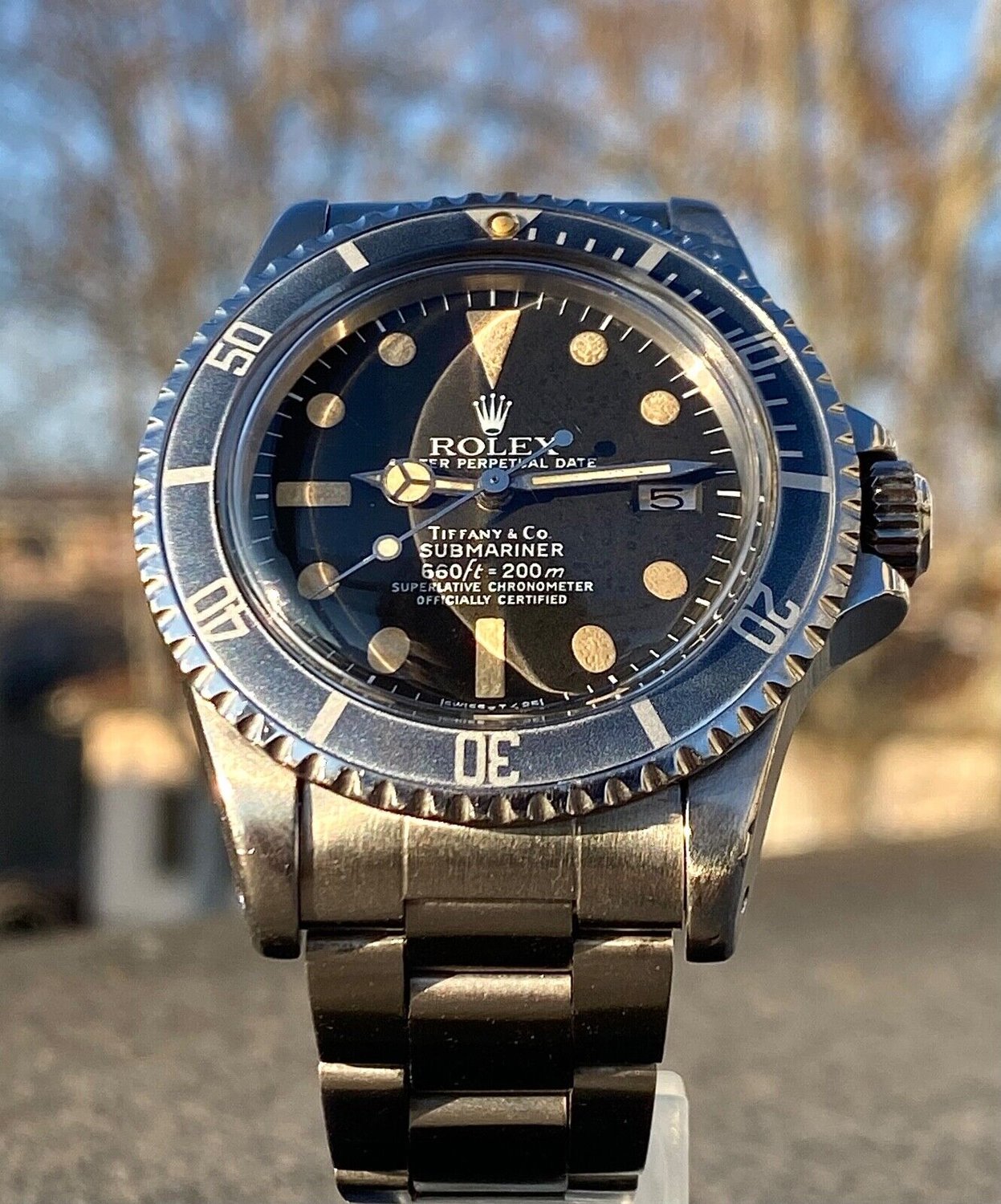
Movement
The Rolex Submariner ref. 1680 was powered by the Caliber 1575, which was based on the Caliber 1570 movement. It had a frequency of 19,800 beats per hour (BPH) and featured a date function, a quickset date, and hacking seconds, which allowed the seconds hand to stop when setting the time.
Crystal
The crystal on the Rolex Submariner ref. 1680 was made of acrylic and featured a Cyclops magnification lens above the date window. The Cyclops lens made it easier to read the date, a feature that was new to the Submariner line with this model.
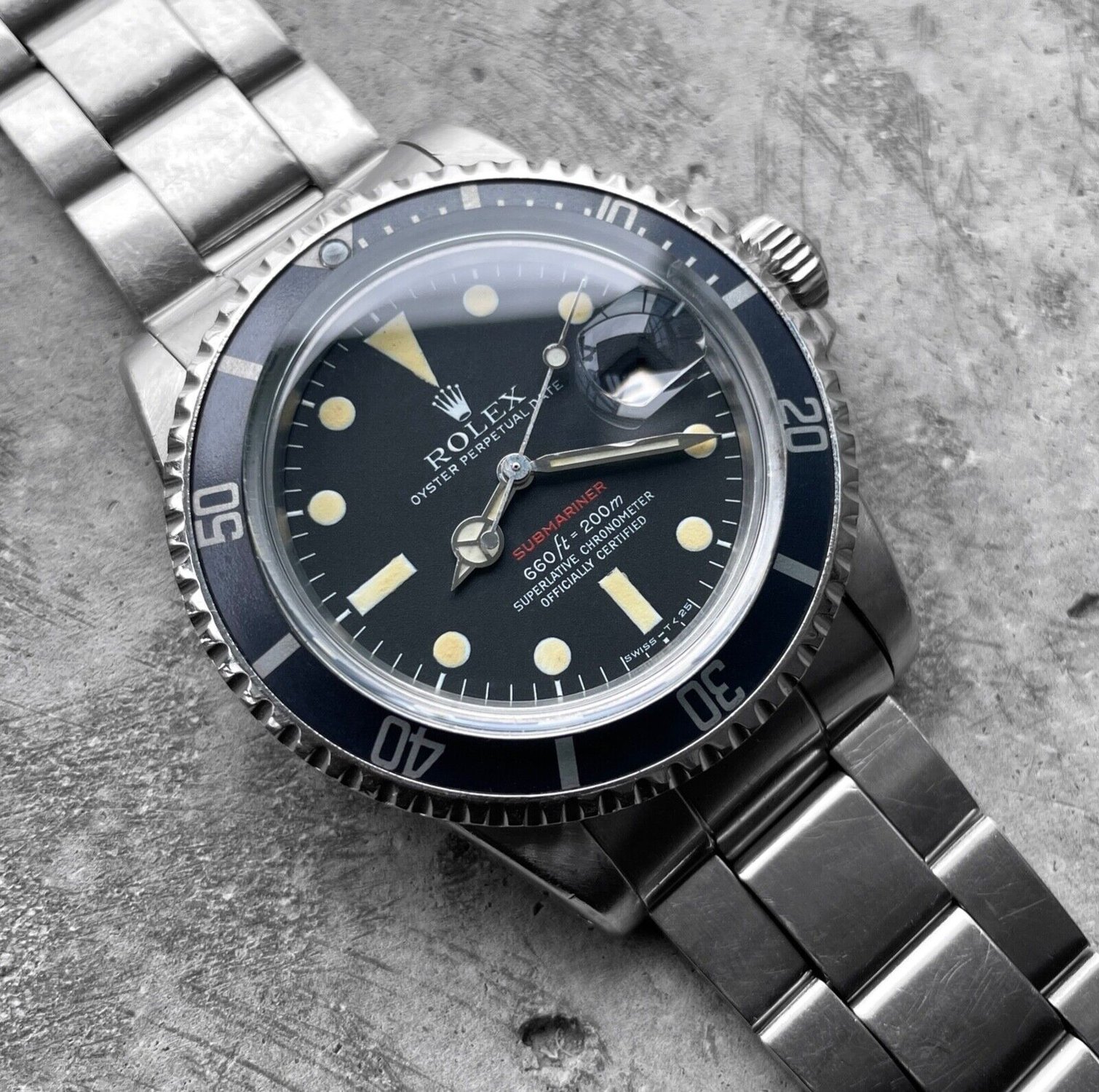
Water Resistance
The Rolex Submariner ref. 1680 had a water resistance rating of 200 meters (660 feet), which was consistent with other Submariner models of the era. This level of water resistance made it a true diver’s watch.
Bracelet
The Rolex Submariner ref. 1680 typically came with an Oyster bracelet, which was a signature feature of Rolex sports watches. The Oyster bracelet was made of stainless steel and featured flat links and an Oysterlock clasp for added security.

Rolex Submariner 1680 Collectibility and Value
The Rolex Submariner ref. 1680 is highly collectible, especially when it comes to early, rare, and well-preserved examples. The most sought-after versions include the Red Submariner with the Single Red on the dial and the White Submariner with the white text on the dial. The Blue Submariner, with its 18k gold case and blue dial and bezel, is also highly desirable.
Other factors that affect the collectibility and value of a Rolex Submariner ref. 1680 include the presence of rare dial variations (such as the "exclamation point" dial), the condition of the watch (including the condition of the dial and hands), and the presence of original box and papers.
In terms of value, prices for Rolex Submariner ref. 1680 watches can vary widely depending on these factors. You could expect to pay anywhere from $10,000 to well over $100,000 for a ref.1680, with the most valuable examples being those in exceptional condition with rare dial variations such as the Tiffany displayed in these images.
If you are looking to buy a vintage Rolex or buy a used rolex online make sure you subscribe to our newsletter and read all our watch guides to help you navigate the pre-owned market.
Keep in mind that the vintage watch market is subject to fluctuations, and prices can change over time. Additionally, the condition and originality of the watch are critical factors in determining its value.

Key Specifications - Rolex Submariner Reference 1680
- Production Years: 1967 – 1980 (approx)
- Case Size: 40mm
- Materials: Stainless Steel; 18k Yellow Gold
- Functions: Time w/ Running Seconds; Date Display
- Dial: Black; Blue (18k Version Only)
- Bezel: Bidirectional. Black Aluminum Insert w/ 60-minute timing scale
- Crystal: Acrylic w/ Cyclops Magnification Lens
- Movement: Caliber 1575 (Cal. 1570 base)
- Water Resistance: 200 meters / 660 feet
- Bracelet: Oyster Bracelet